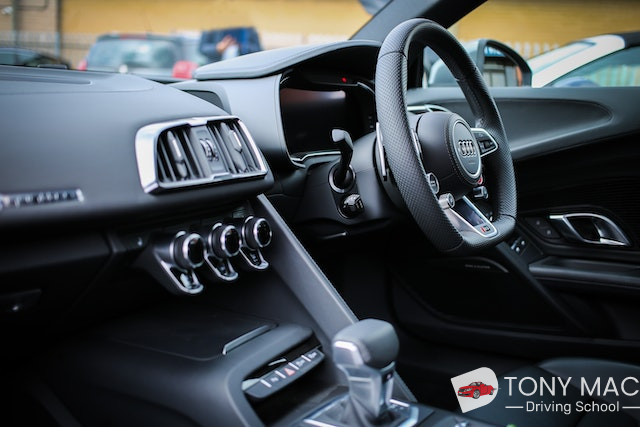Roundabout Driving Lessons: Navigating the Circle Safely
Roundabouts have actually ended up being a typical function on roads globally, designed to enhance traffic circulation and enhance safety. With their special circular style, they can be difficult for both new and experienced drivers. Comprehending how to browse roundabouts securely is necessary, and structured driving lessons can supply the important understanding and skills required. Learn To Drive will check out the basics of roundabout navigation, ideas for efficient driving in these circumstances, and address some frequently asked questions related to roundabout driving.
What is a Roundabout?
A roundabout is a circular intersection where road traffic flows nearly continuously in one instructions around a main island. Unlike standard crossways, roundabouts decrease the likelihood of severe mishaps by lowering car speeds and helping with a smoother flow of traffic.
Primary Benefits of Roundabouts
- Increased Safety: The style minimizes the capacity for high-speed accidents.
- Better Traffic Flow: Continuous motion lowers waiting times and blockage.
- Ecological Benefits: Fewer stops and starts can reduce automobile emissions.
Rules of the Road for Roundabouts
When driving in a roundabout, sticking to traffic guidelines is important. Below are some vital guidelines to bear in mind when approaching and navigating roundabouts:
Key Rules for Roundabout Driving
- Yield to Traffic: Drivers approaching a roundabout should yield to cars already in the roundabout.
- Expect Pedestrians: Always be cautious of pedestrians crossing at the roundabout entryways and exits.
- Use Turn Signals: Indicate your intentions by utilizing turn signals when leaving the roundabout.
- Choose the Correct Lane: Entering the roundabout in the proper lane produces a smoother experience.
- Keep Moving: If the way is clear, move on instead of stopping needlessly.
| Guideline | Description |
|---|---|
| Yield to traffic | Enable lorries in the roundabout to pass initially |
| Enjoy for pedestrians | Look out at crosswalks surrounding the roundabout |
| Use turn signals | Indicate your exit from the roundabout |
| Choose the correct lane | Position your car in the ideal lane |
| Keep moving | Preserve a constant speed; don't stop unless required |
How to Approach a Roundabout
When approaching a roundabout, it's essential to follow:
- Observe road indications: Look for yield signs and other indications of the roundabout's rules.
- Assess the traffic: Check the circulation of lorries currently in the roundabout.
- Signify your intents: If you mean to exit the roundabout, signal your exit when you are near your intended lane.
Actions for Navigating a Roundabout
- Action 1: Slow down as you approach.
- Step 2: Yield to traffic inside the roundabout.
- Step 3: Enter when it's safe and keep a constant speed.
- Step 4: Use signs to signal your exit.
- Step 5: Watch for other automobiles and pedestrians while leaving.
Tips for Successful Roundabout Navigation
Successfully navigating roundabouts takes practice. Here are some curated suggestions:
Essential Tips
- Stay calm: Roundabouts are designed to lower tension on drivers; take deep breaths if you feel anxious.
- Watch out for big lorries: Be cautious of trucks and buses, which may need more space.
- Practice persistence: If traffic is heavy, wait on a space before entering; do not rush.
- Comprehend the circulation of roundabouts: Familiarize yourself with how different kinds of roundabouts (multi-lane, single-lane) run.
Frequently Asked Questions About Roundabout Driving Lessons
1. What is the function of roundabouts in driving?
Roundabouts boost safety and traffic flow by helping with continuous motion and reducing the possibilities of severe accidents.
2. How do I know which lane to utilize in a roundabout?
Generally, the lane you must choose depends on your desired exit:
- Left lane for taking the first exit.
- Right lane for direct exits or going directly.
- Middle lane for several exit choices.
3. Exist various kinds of roundabouts?
Yes, there are:
- Single-lane Roundabouts: Designed for automobiles to browse in a singular lane.
- Multi-lane Roundabouts: Allow more than one lane, demanding higher attention to lane choice.
4. What should I do if I miss my exit?
If you miss your exit, continue in the roundabout until you can safely leave at the next chance.
5. Can bicyclists and pedestrians use roundabouts?
Yes, cyclists can browse roundabouts, usually through designated bike lanes. Pedestrians are likewise accommodated with crosswalks.
Roundabouts are an effective service for handling road traffic more securely and efficiently. Participating in view it driving lessons can boost one's confidence and compliance with traffic guidelines. By understanding the guidelines, practicing correct methods, and staying informed about common inquiries, drivers at all experience levels can browse roundabouts successfully. Continuing education and practice in real-world situations are crucial as road conditions and guidelines may vary, and familiarity will improve general driving skills.

